2018 NDnano Seed Grants
Nine faculty members from the University of Notre Dame’s College of Engineering and College of Science were awarded four grants through the Notre Dame Nanoscience and Technology (NDnano) Seed Grant Program.
In discussing the awards, Alan C. Seabaugh, Frank M. Freimann Chair Professor of Electrical Engineering and director of NDnano, said, “We are excited to launch these four research collaborations, each building on materials innovations at Notre Dame. The research impacts a broad application space including opioid detection, water purification, molecular detection, and low power computing.”
The 2018 Seed Grant Program recipients are:
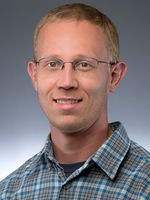 Camden
Camden
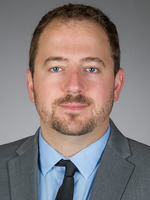 Webber
Webber
Principal investigators: Matthew Webber, assistant professor of chemical and biomolecular engineering, and Jon Camden, associate professor of chemistry and biochemistry
Project: “Supramolecular capture of fentanyl on nano-gold sensors”
Abstract: As an opioid drug of abuse and potential chemical agent, fentanyl is a growing hazard. Moreover, its extreme toxicity and its large-quantity availability pose imminent risk for its use as a weapon of war or terrorism. Detection of fentanyl remains a challenge, especially when diluted in a gas/aerosol phase, or in the midst of contaminating solutes or dispersants. There are limited technologies for specific capture and detection of this threat in a complex environment. Currently, fentanyl detection depends primarily on mass spectrometry, which has limited portability for field use. There is a pressing need to mitigate this threat with scalable technology. The project goals are to design capture agents with high affinity for fentanyl and deploy these on nanoparticle colloids for surface-enhanced Raman spectroscopy (SERS) detection.
 Phillip
Phillip
 Go
Go
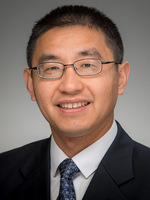 Gao
Gao
Principal investigators: Haifeng Gao, associate professor of chemistry and biochemistry, David Go, Rooney Family Associate Professor of Engineering, and William Phillip, associate professor of chemical and biomolecular engineering
Project: “Elucidating the influence of ferroelectric polarization on metal ion adsorption to the surface of nano-porous thin films”
Abstract: Access to clean water is an ever-growing concern as it is critical to ensure human health and to promote economic growth. A recognition has emerged that, along with better conservation of existing resources, non-traditional sources of water (e.g., seawater and wastewater) will need to become components of the water supply portfolio. Concurrently, there is an emerging trend to view the nutrients and metal ions dissolved in non-traditional sources of water as resources that can be recovered. These factors have catalyzed research into hybrid processes, which utilize a cascade of separation processes to remove harmful and/or recover valuable solutes while producing potable or non-potable water that meets the purity demanded by the requirements of its end users. The goal of this research project is to establish a class of nanoporous adsorptive thin films that capitalize on the ferroelectric properties of polyvinylidene fluoride (PVDF) to realize low-energy, high selectivity devices for these emerging chemical separations needs. Thin sorbents films derived from copolymer composites exhibit tunable nanostructures with uniquely-high ion uptake capacities. However, in order to create impactful technologies for the benefit and betterment of society, it is critical that the adsorptive films can be regenerated and reused in an energy-efficient manner. To address this need, sorbents based on a PVDF matrix will be developed. In particular, the researchers hypothesize that the ferroelectric nature of the PVDF, and in particular the large polarization on the PVDF surface, will allow the local chemical environment within the nanopores of the thin films to be manipulated in a manner that allows for the rapid and energy-efficient regeneration of the sorbents. The successful execution of this research plan will result in a versatile sorbent platform that helps to meet society's growing demand for water.
 Roeder
Roeder
 Hoffman
Hoffman
Principal investigators: Anthony Hoffman, associate professor of electrical engineering, and Ryan K. Roeder, professor of aerospace and mechanical engineering
Project: “Polar nanoparticles: A new optical platform for the long-wavelength infrared”
Abstract: The goal of this project is to establish the key structure-property relationships governing the interaction of polar crystal nanoparticles (NPs) with mid-infrared (mid-IR) and far-infrared (far-IR) light to realize a new class of nanophotonic materials for the long-wavelength IR. These phononic NPs (PhNPs) are functionally analogous to plasmonic NPs in supporting localized modes with enhanced electric fields, but differ by interacting strongly with longer wavelength light. Therefore, PhNPs are expected to enable enhanced sensing and imaging capabilities in the mid- to far-IR spectrum, similar to that recently enabled by plasmonic NPs in the UV to near-IR (NIR). By establishing fundamental structure-property relations governing PhNPs, this work aims to build a phononic materials infrastructure that will enable the development of new optical materials and new phononic nanotechnologies in sensing, imaging, integrated photonics, and more.
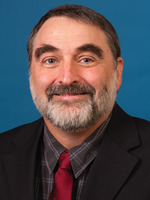 Snider
Snider
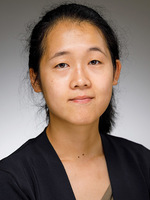 Tsui
Tsui
Principal investigators: Emily Tsui, assistant professor of chemistry and biochemistry, and Greg Snider, professor of electrical engineering
Project: “Synthesis and demonstration of switching in neutral mixed-valence molecular quantum-dot cellular automata”
Abstract: The researchers are working on the synthesis of novel neutral mixed-valence diferrocenylborate complexes. These molecules will be incorporated into single-electron transistor (SET) devices to demonstrate single charge switching. The proposed project will enable a revolutionary approach to electronics and computation by testing molecules suitable as the building blocks for quantum-dot cellular automata (QCA), a transistor-less computational paradigm, developed at Notre Dame, that mixes computation, interconnect, and memory to avoid the von Neumann bottleneck. These devices will approach the fundamental limits for energy use in computation.